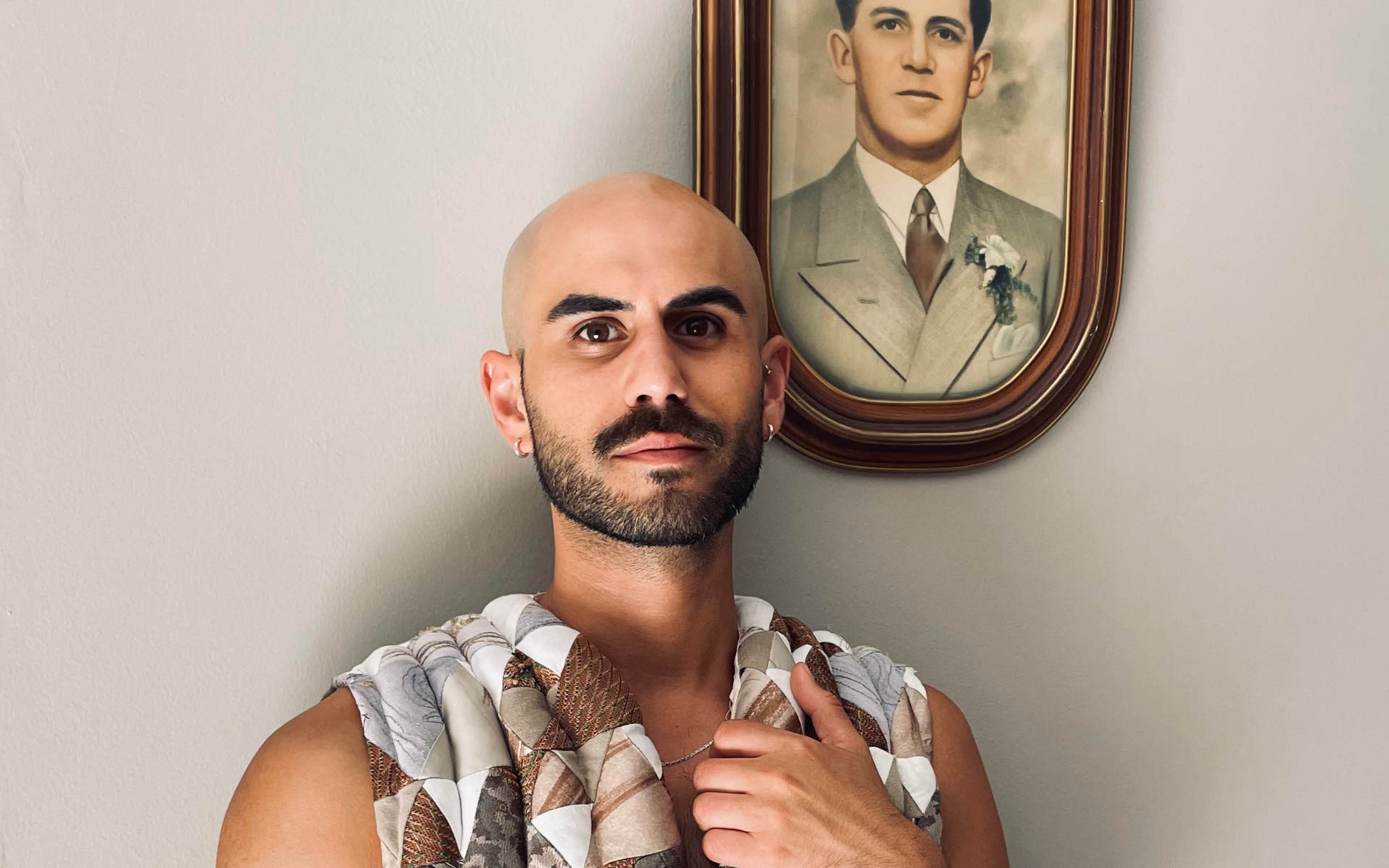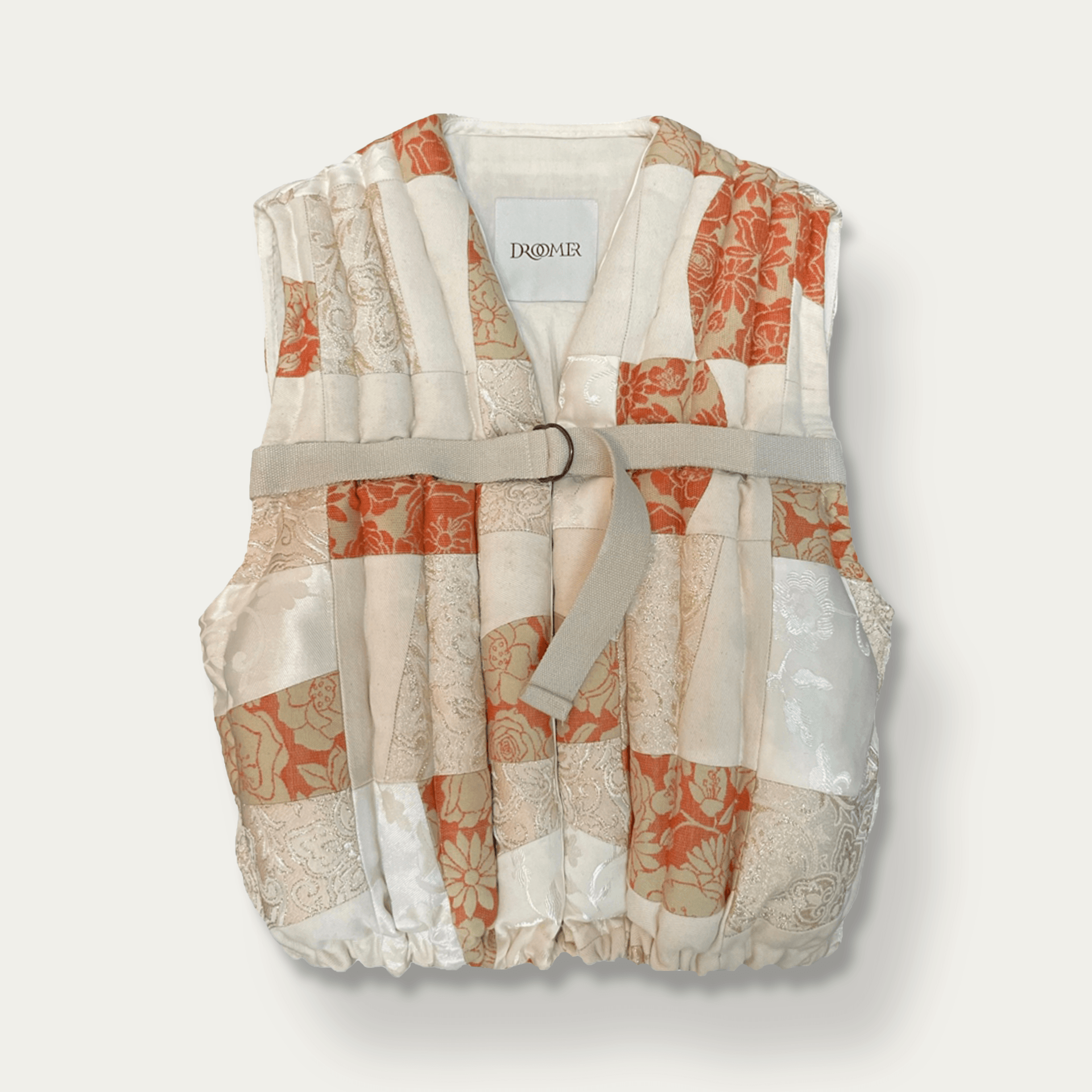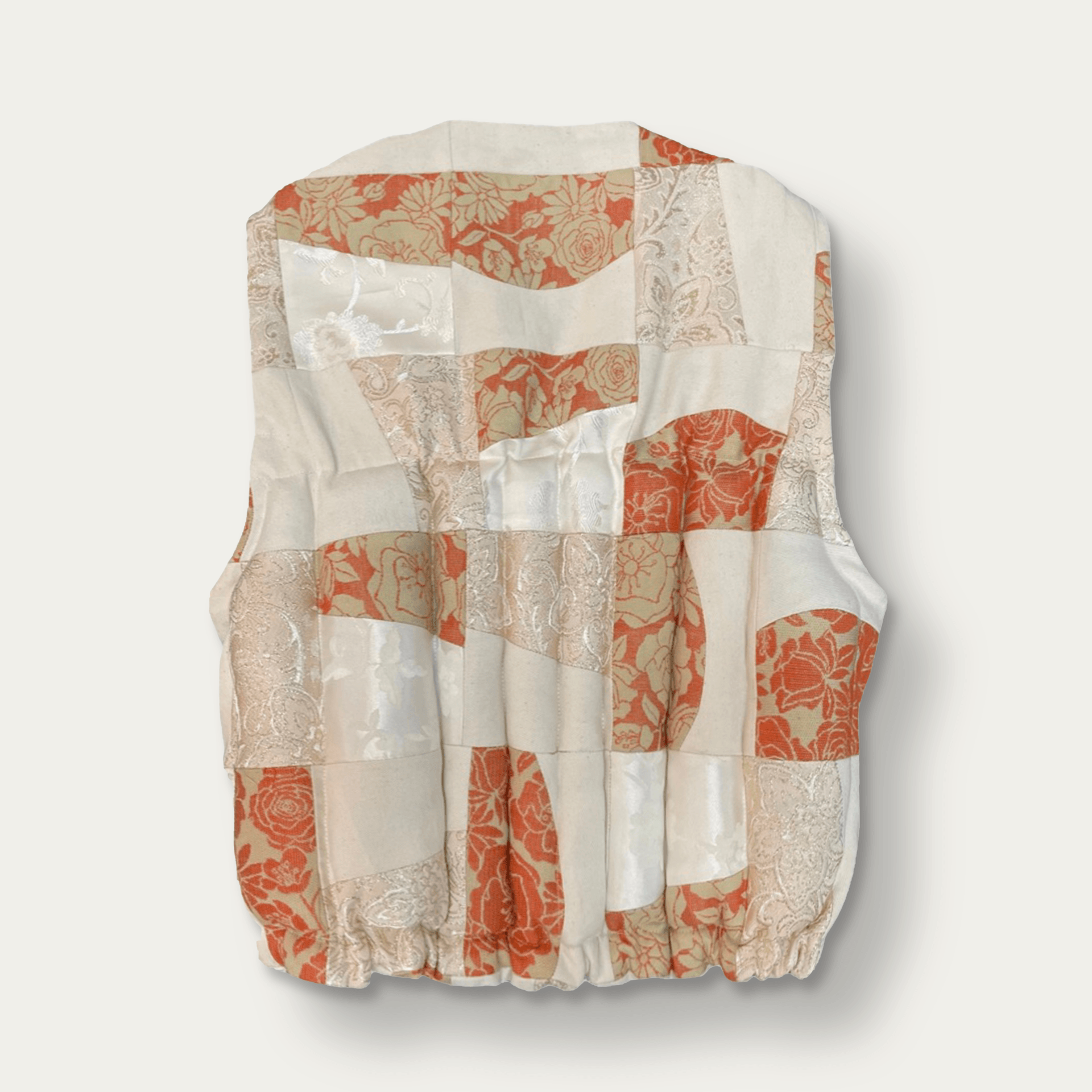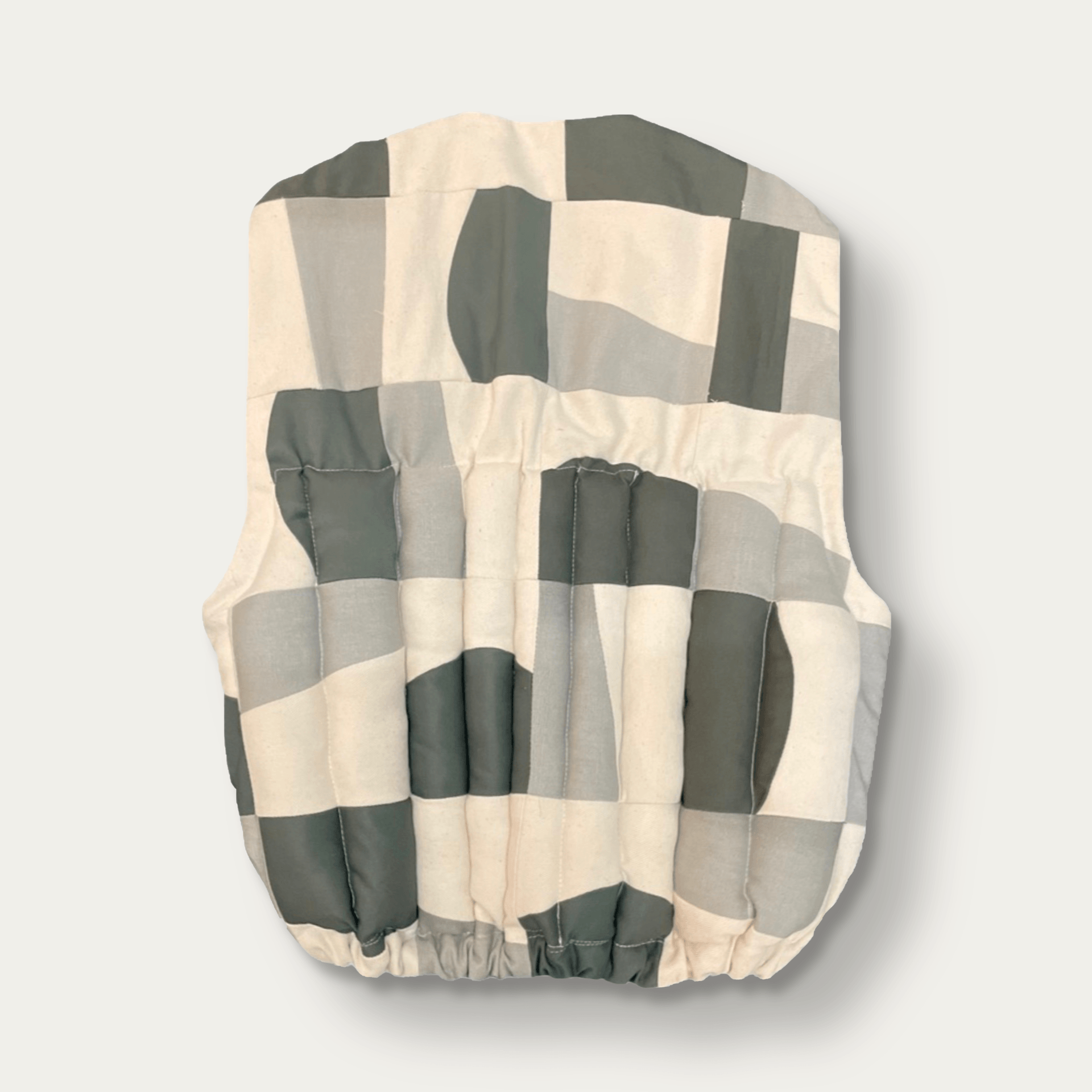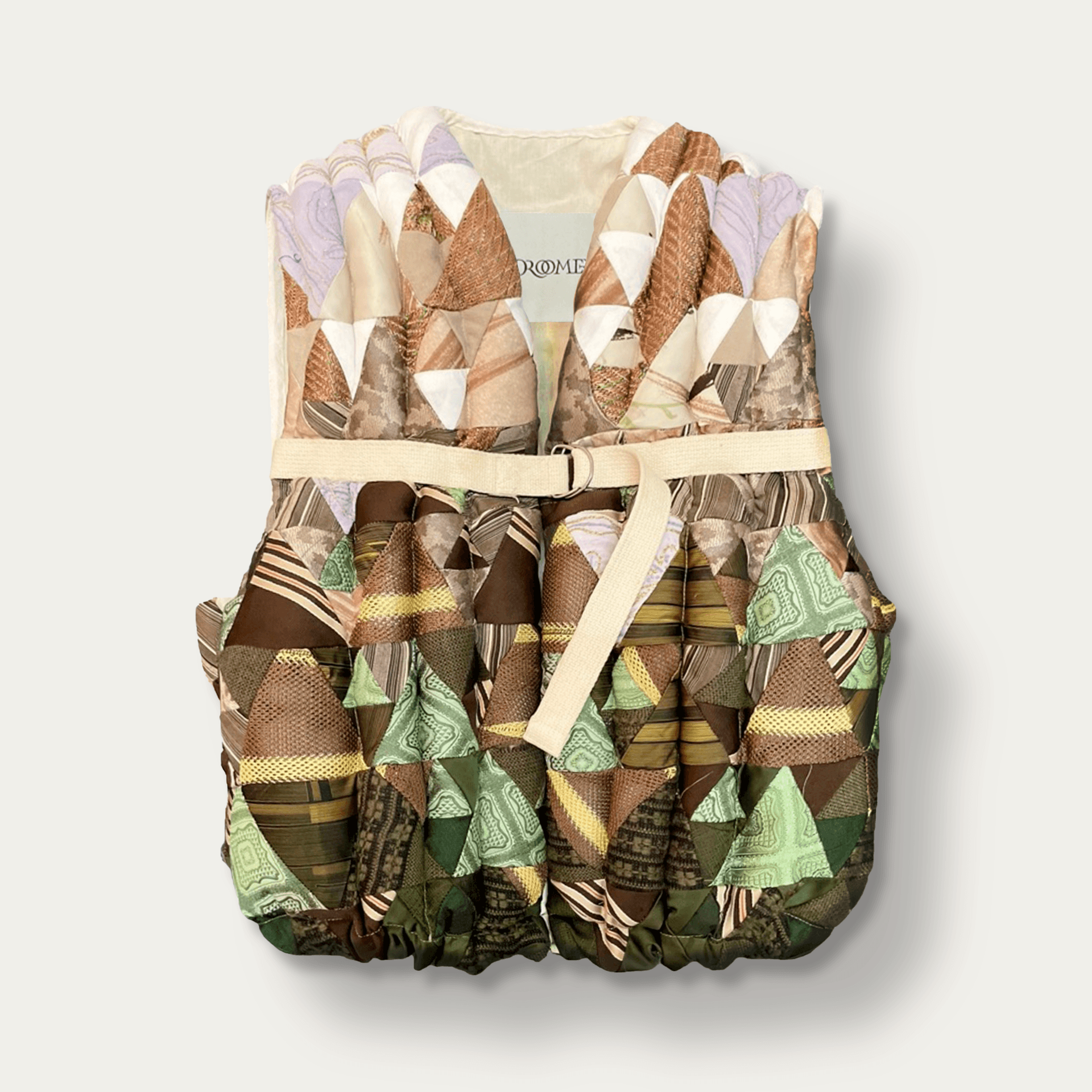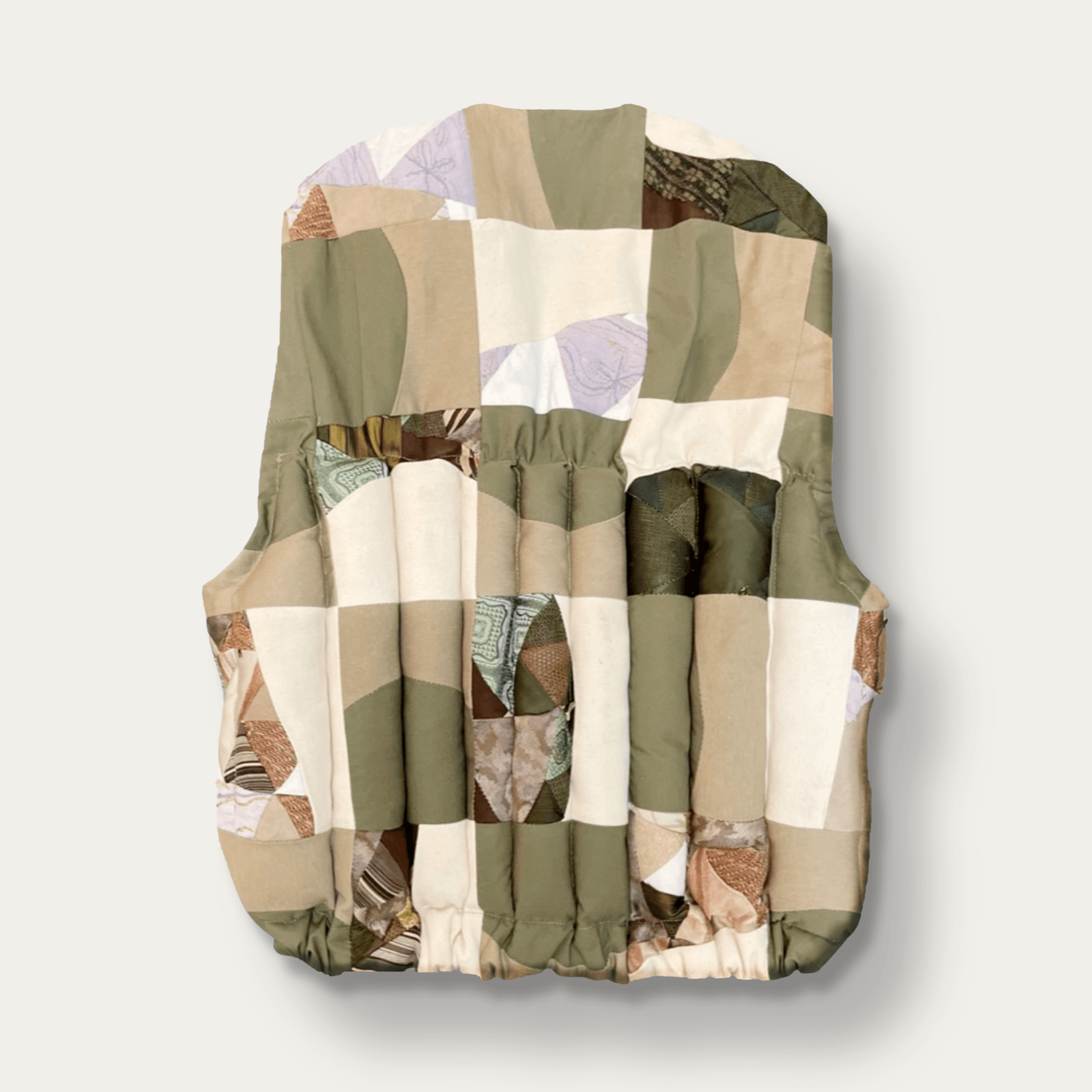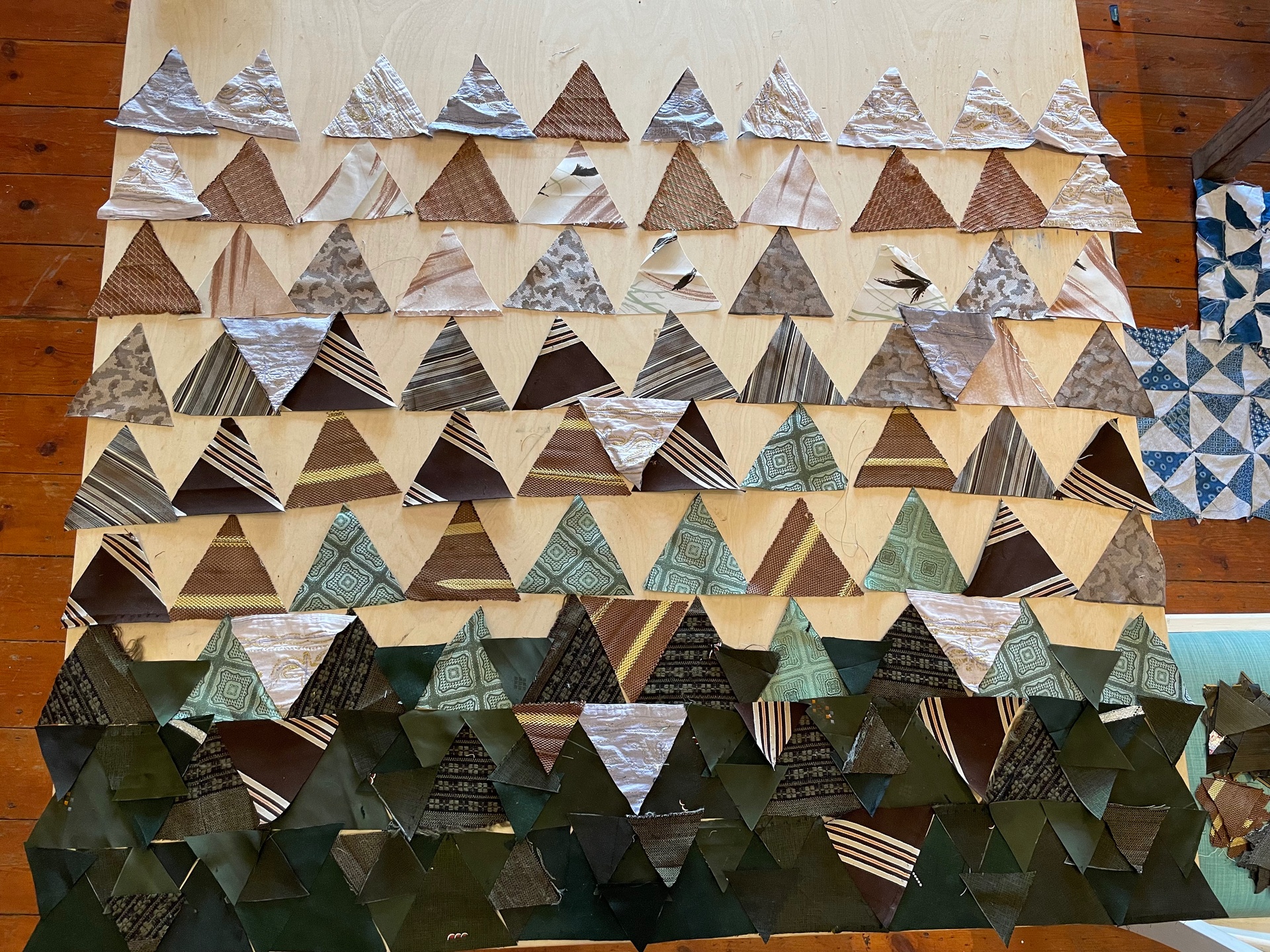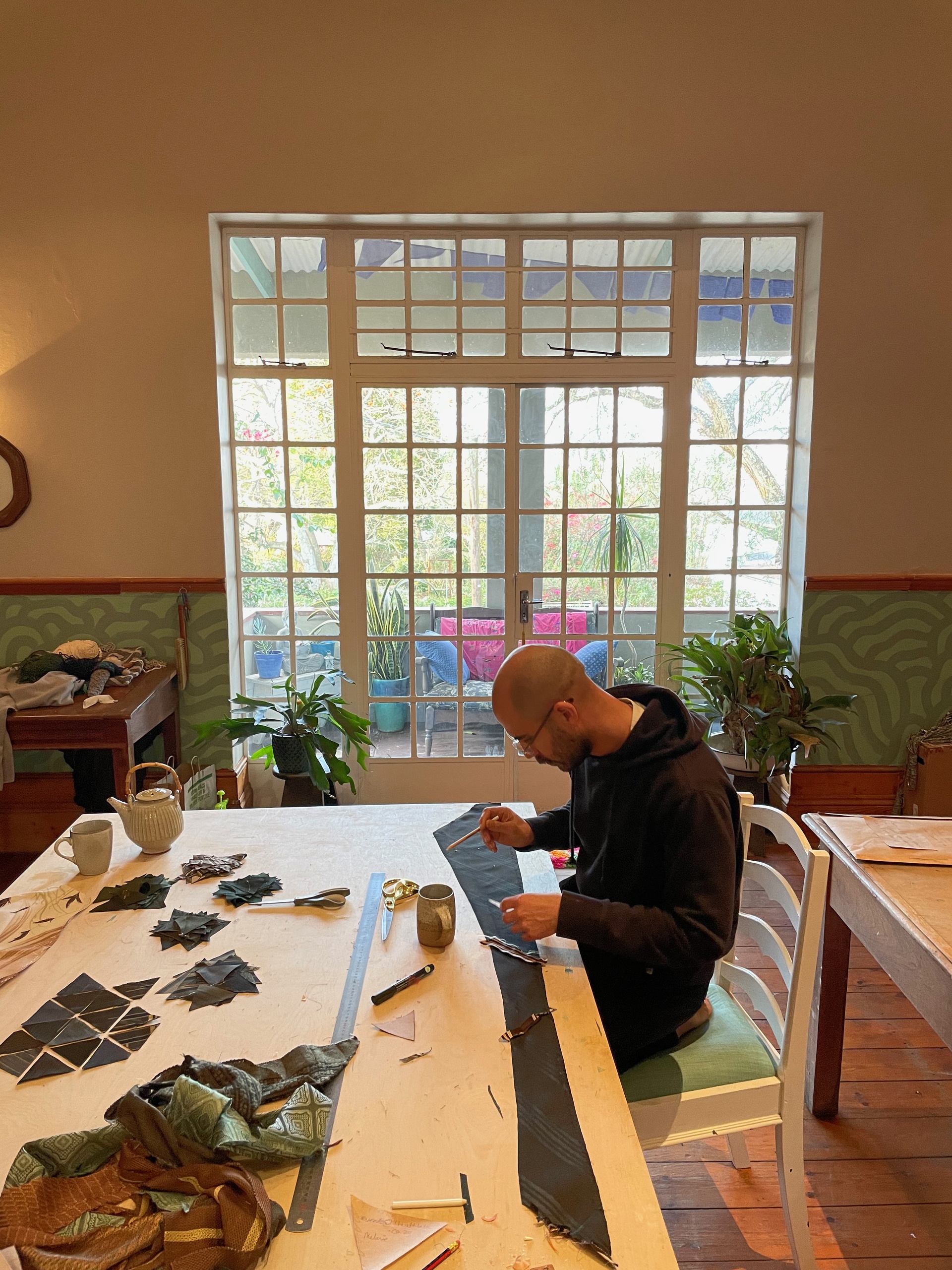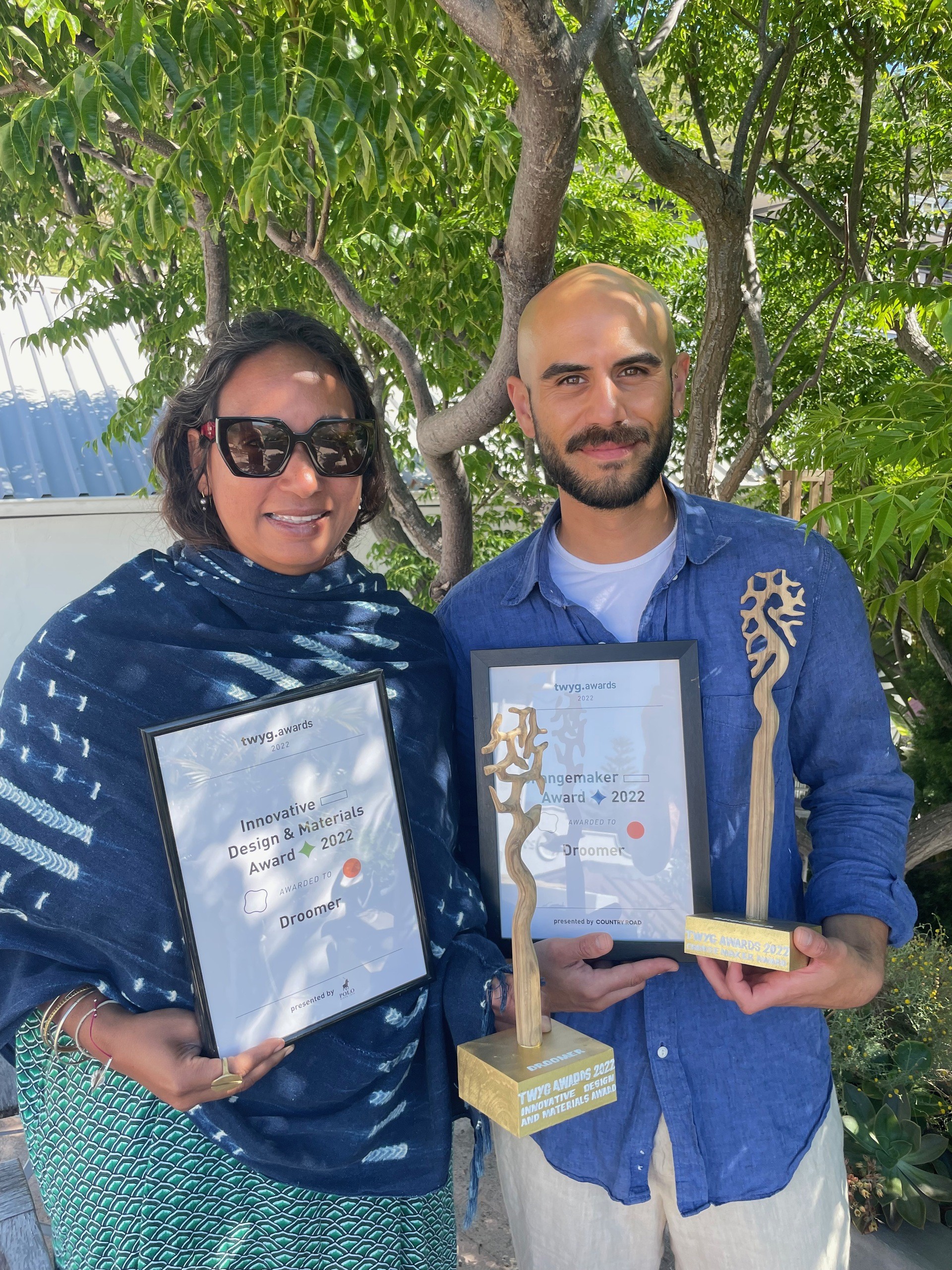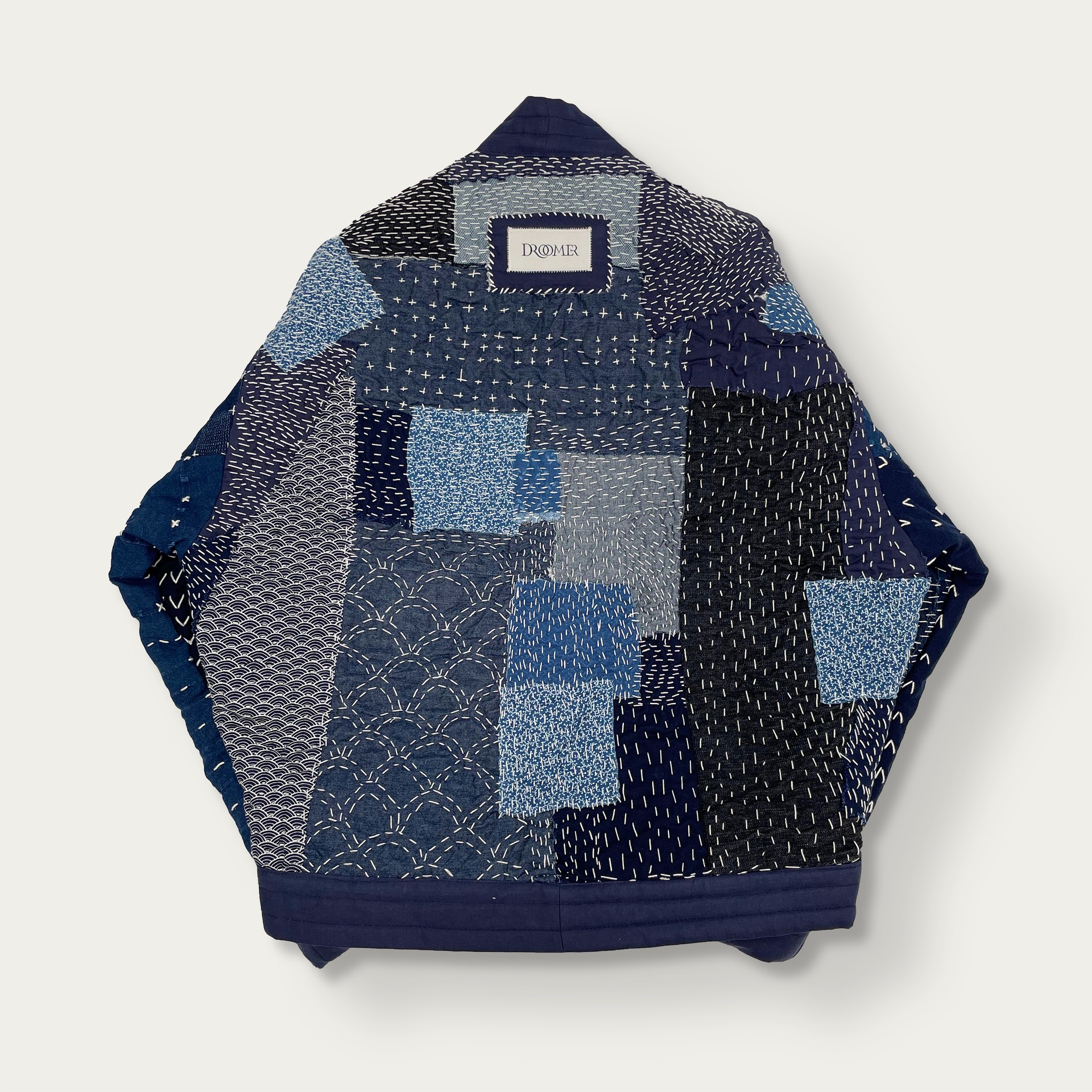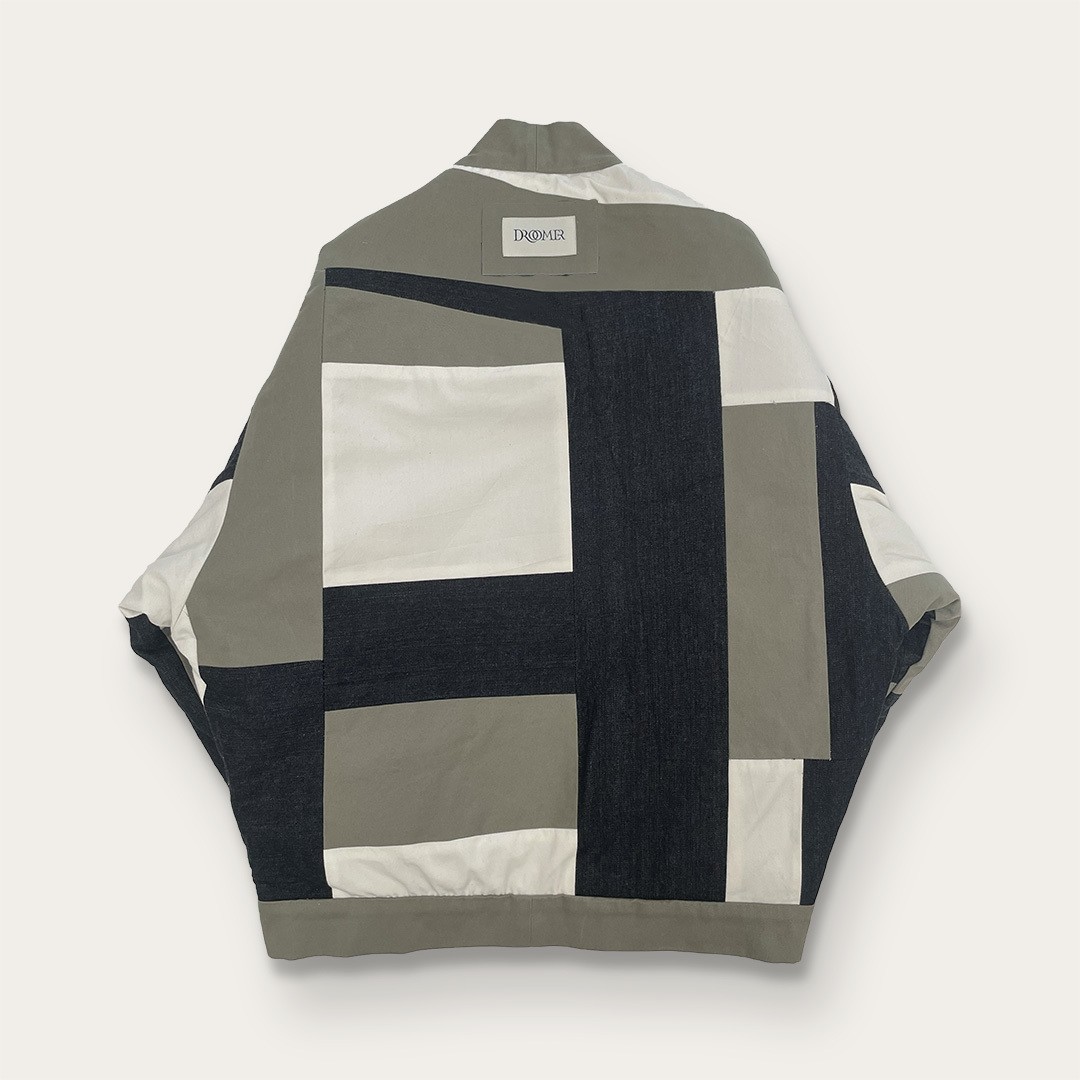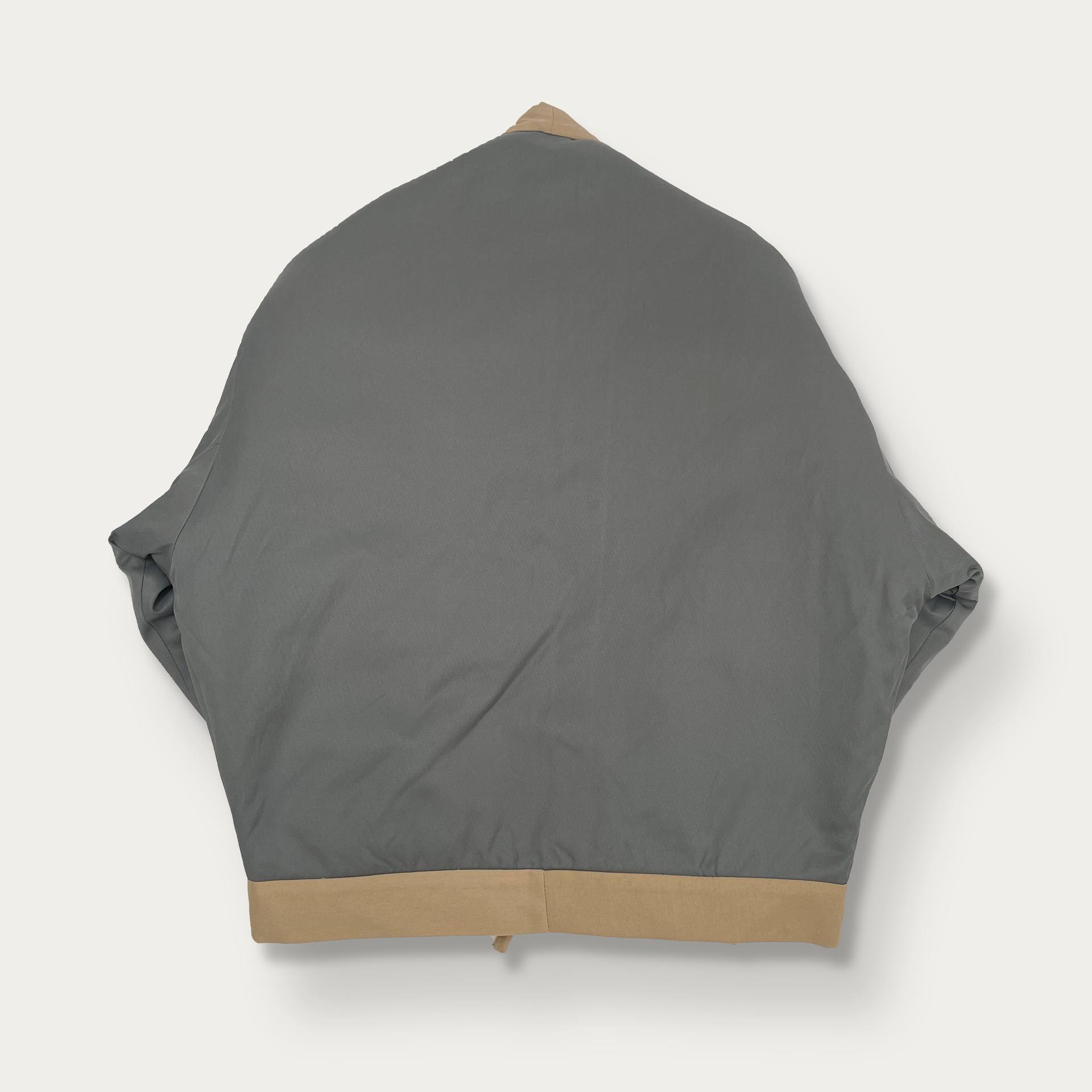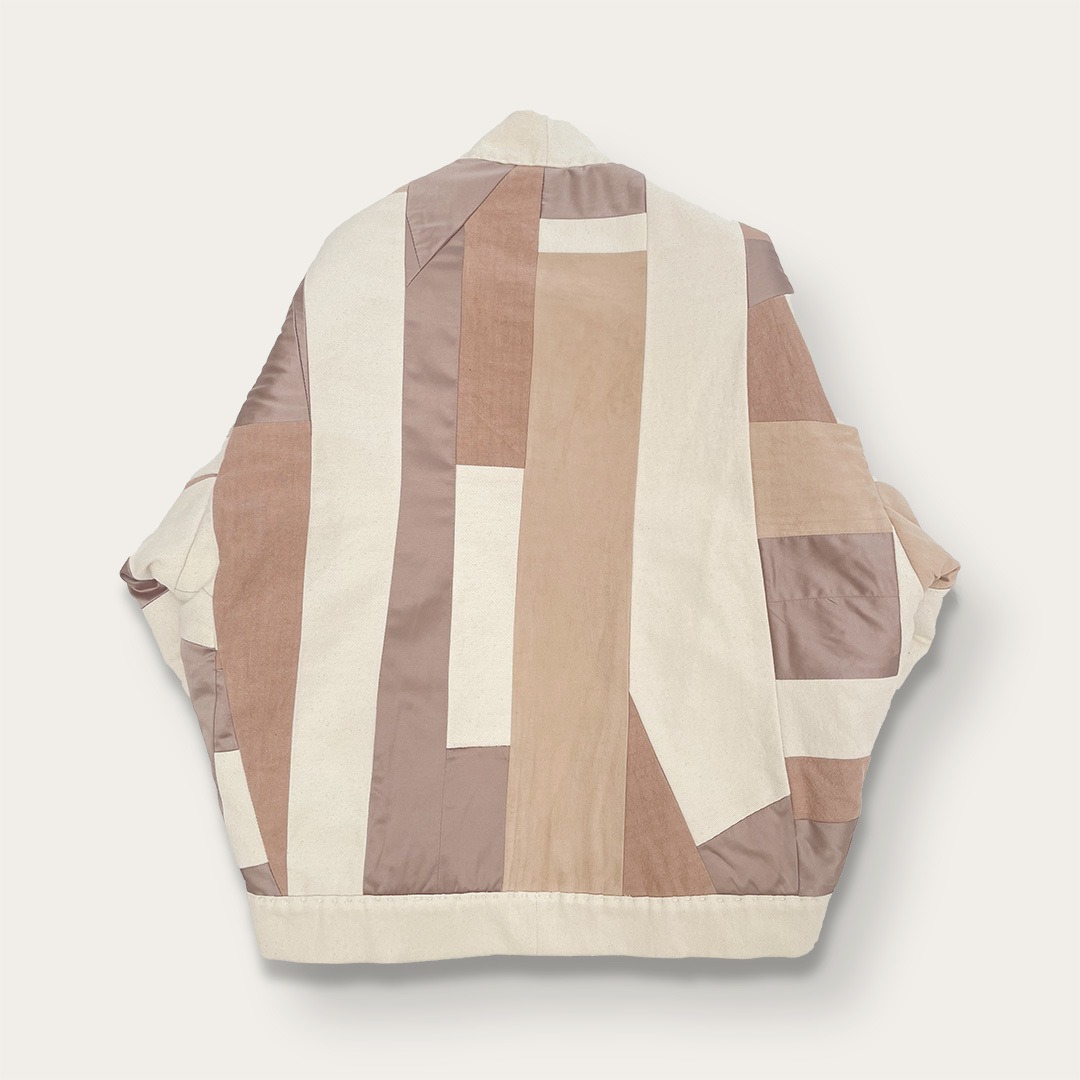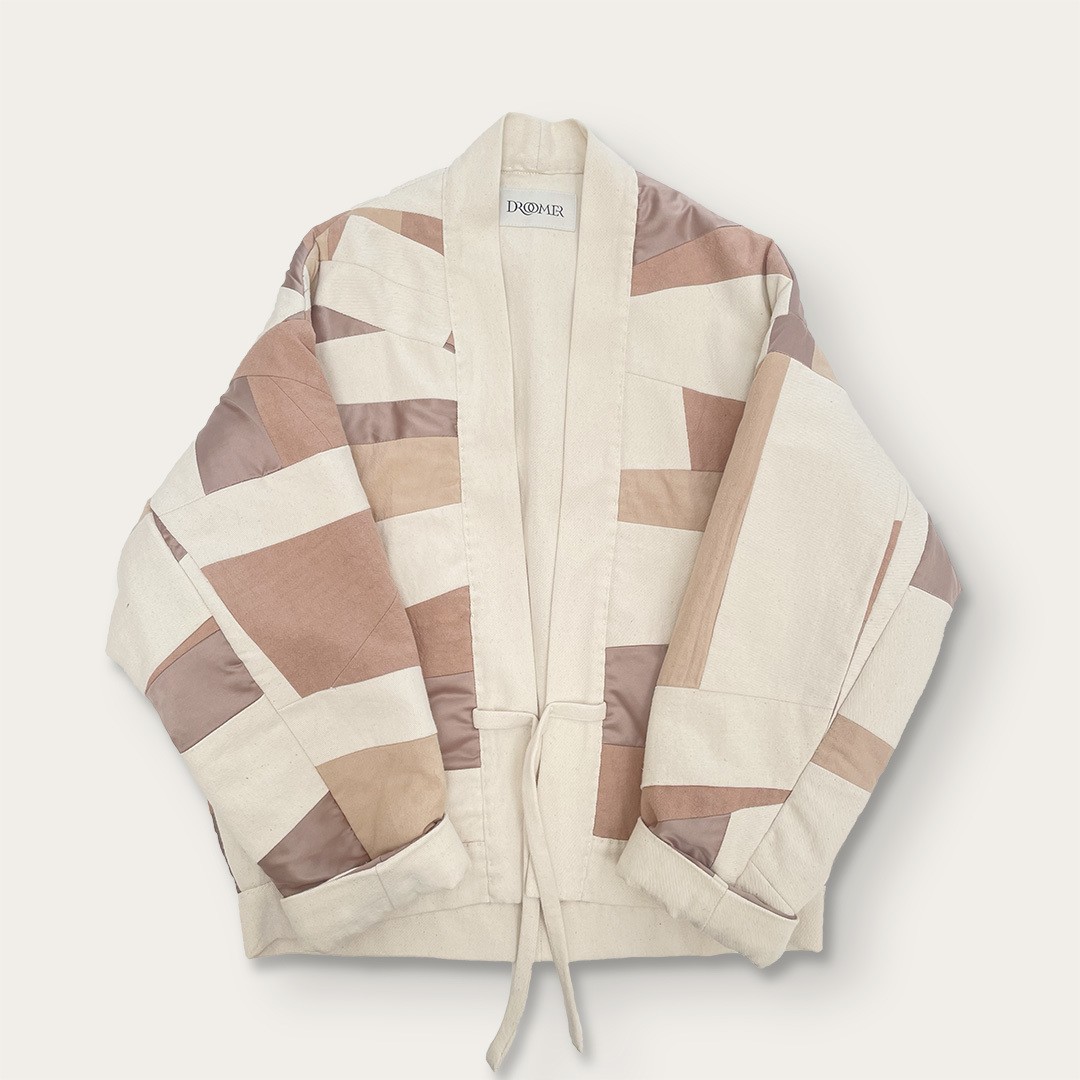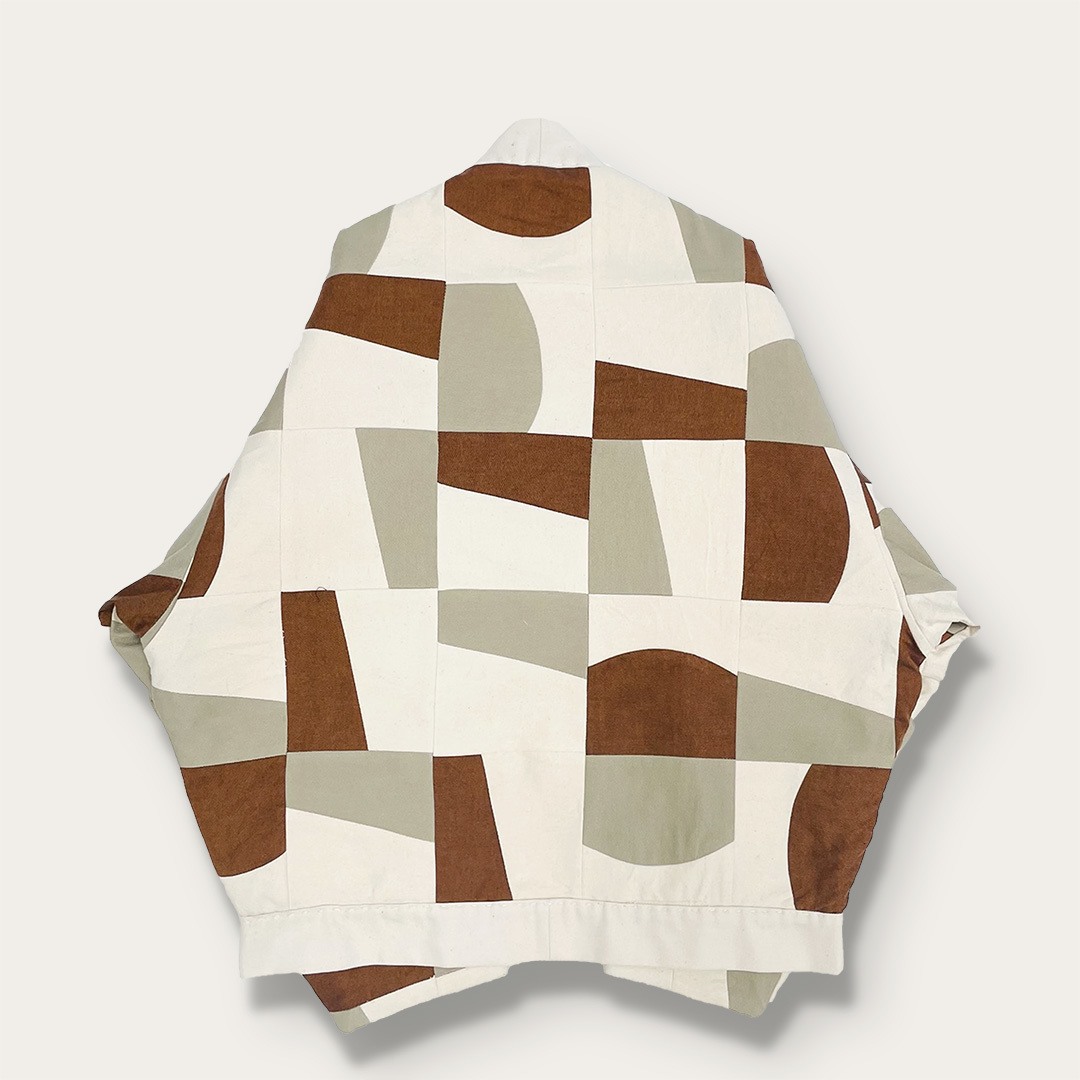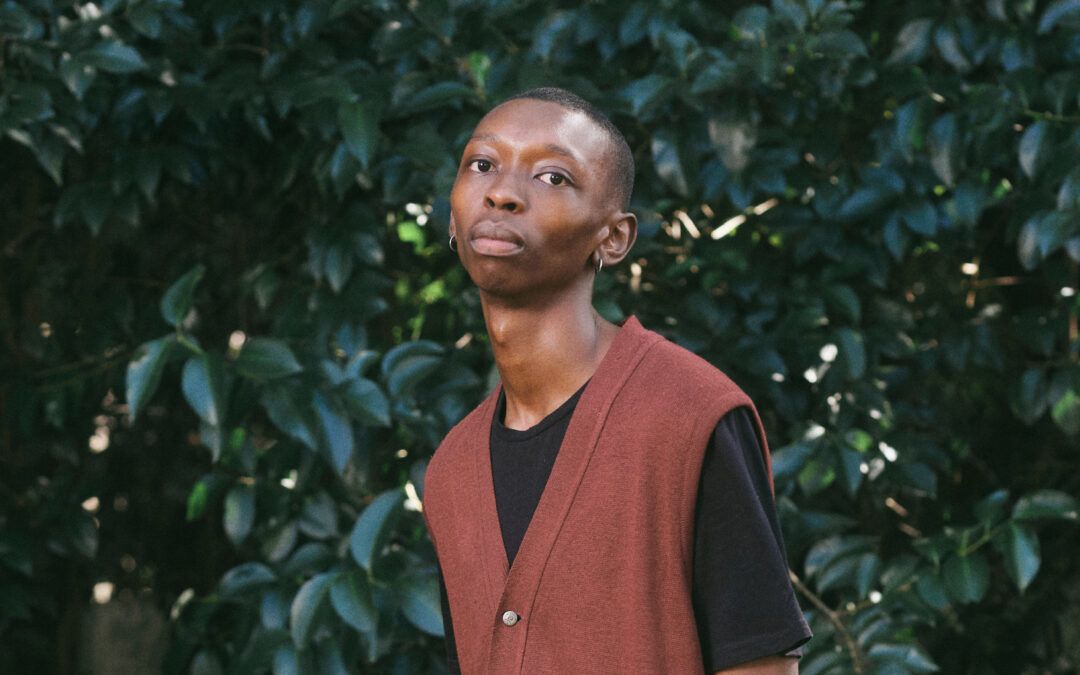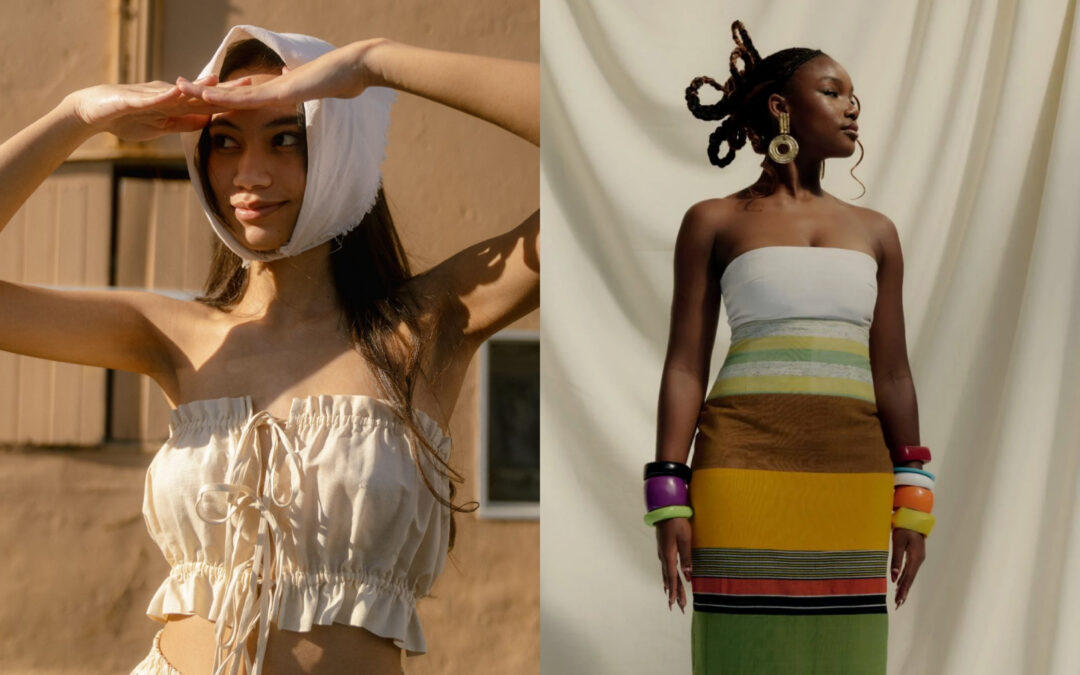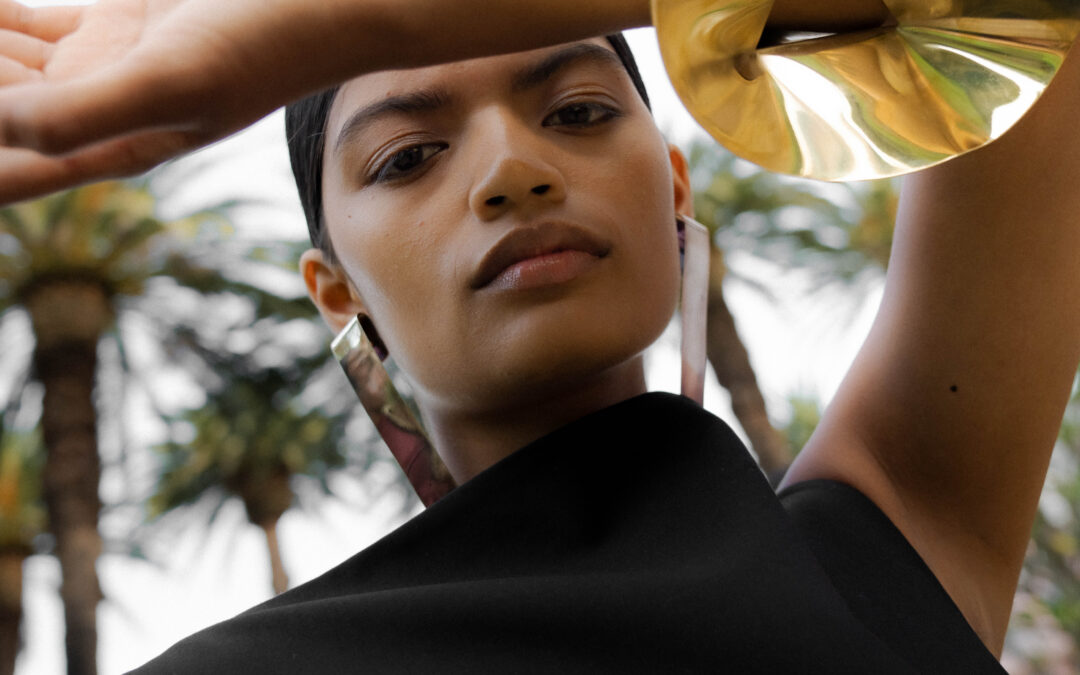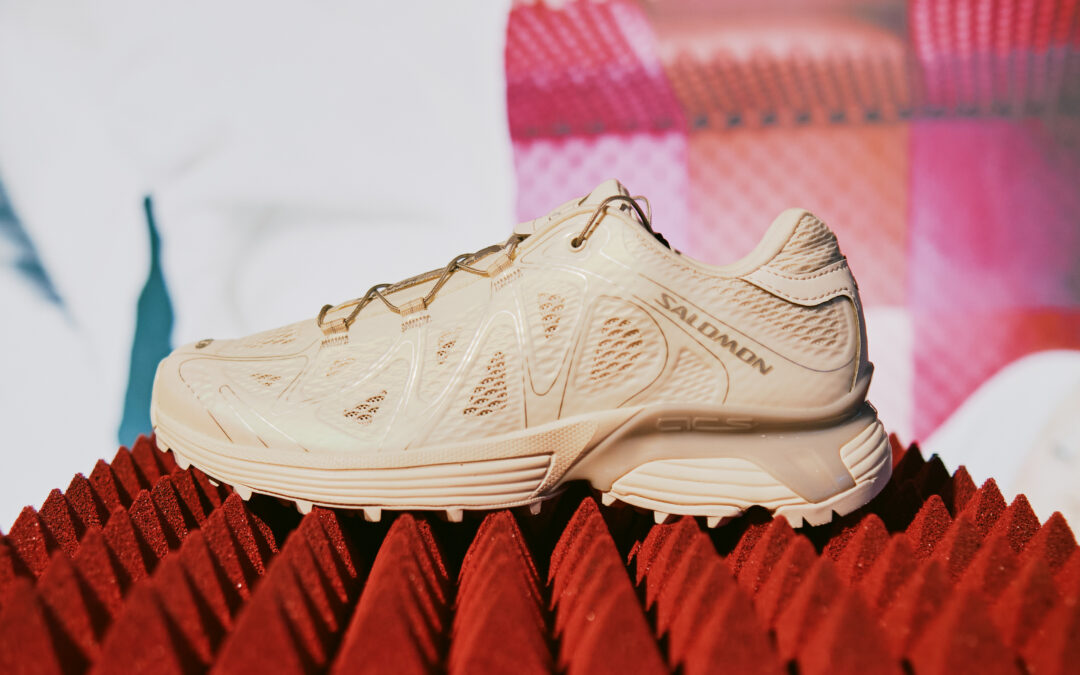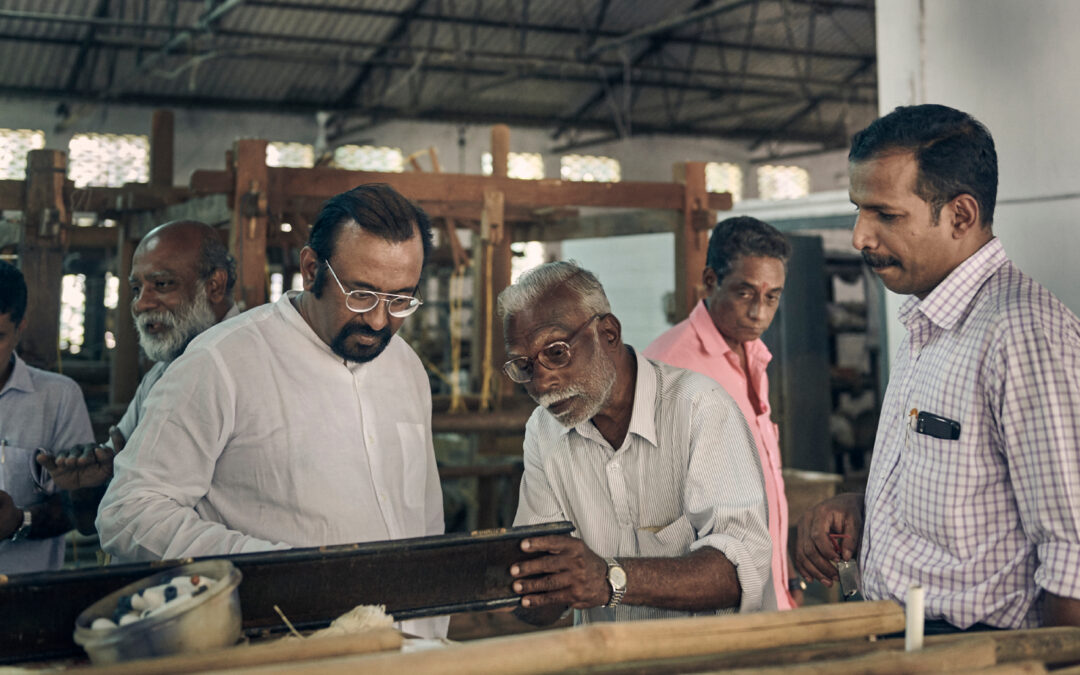Sometimes I come across the work of an artist whose work reaches further than fuelling my thinking or filling my heart – rather, such an artist’s vision translates further, and across the multiplicity of being; reaching deep into the multi-dimensional and unseen. Cleo Droomer is one such artist, for whom fashion is his medium; and by this I mean the very sacred act of dressing the body. For a few years I have been using the term ‘sartorial consciousness’ to describe the often in-articulable way in which clothing design lends itself to an unspoken power and dimension, in which the truths of identity, expression and memory are directly displayed to the closest home we have on earth; our bodies and our skin. It is within this realm of design, that Cleo’s practice and being is illuminated. When he was awarded the Country Road’s ‘Changemaker Award’ at Tywg’s annual Sustainable Fashion Awards, attendees were invited to view pieces on display; to get an understanding of why Cleo had won an award which is not open for entry, and is considered the highest accolade of the event. The (Life) Jackets are a series of life-jackets constructed of heirloom fabric in his familial archive (specifically from his grandmother’s scraps and grandfather’s ties), bringing into question ‘Ocean Heritage’, calling for the recognition of the ocean as a site of the historical enslavement of people & ancestors, for whom the waters of the world were the course of displacement and violence. This continues today with the displacement and refuge of millions of people across the world. It is in this that Cleo demonstrates what fashion and design can truly mean and be in a world – one which is burning, uncertain, and bound by the past and present, systemically violent ways of colonialism, white supremacy and geo-politics.
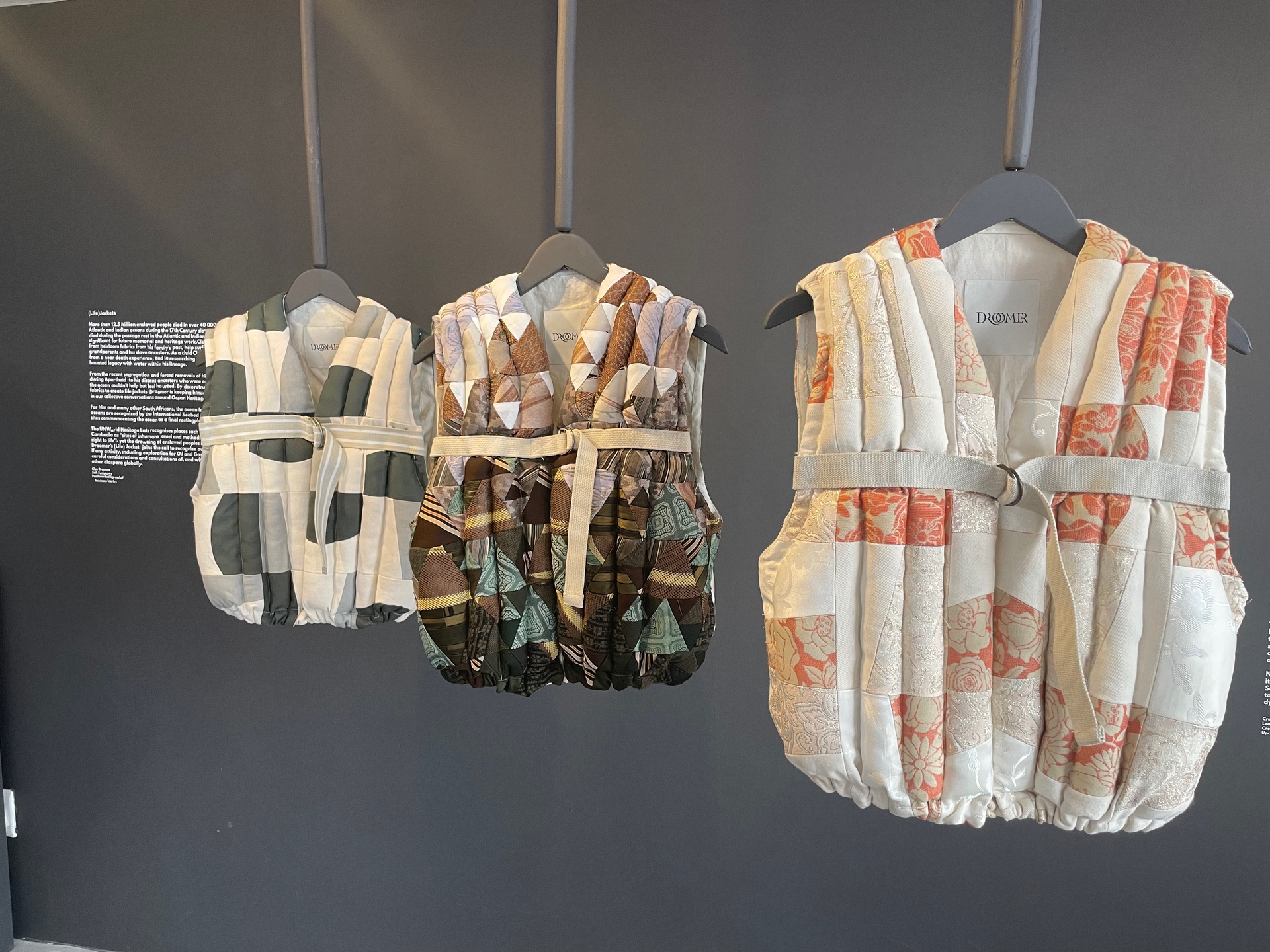
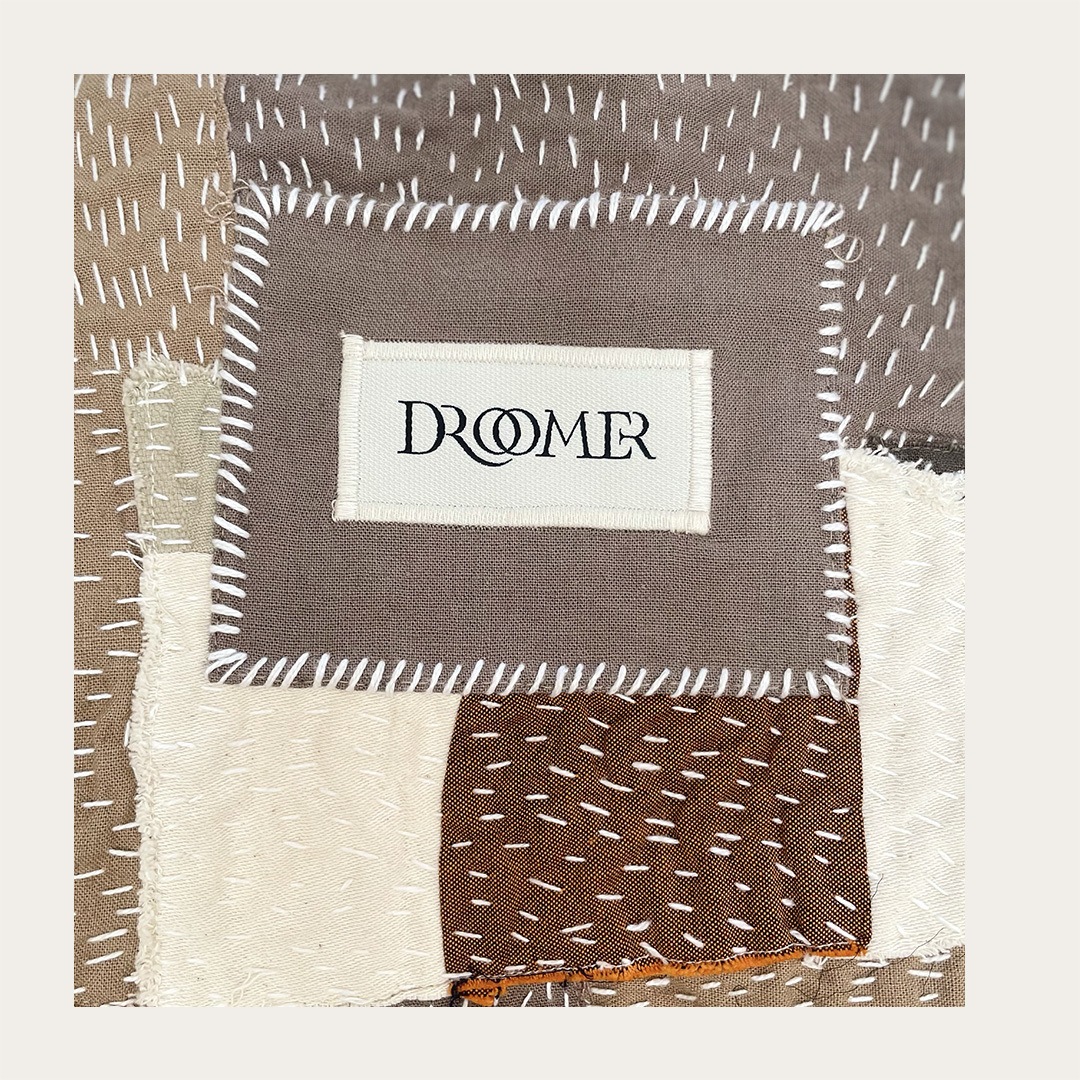
In this incredibly thoughtful and poignant Q+A, Cleo Droomer (his surname means ‘dreamer’) relays his visions. I am awe-struck, and resolved in my hope for the future of fashion.
Where does design originate from for you, and fashion or clothing in particular?
I have always loved the practice of making, and as a young child I often found myself in the garden sculpting pots out of clay from the earth or weaving vines and leaves together to make some form of eco-textile. My love for making had always been there, but it wasn’t until I was tasked to design my own Matric dance suit that I realised that I really wanted to make a career out of design.
My grandmother was a highly respected dressmaker, and when she passed in the early 90’s I found myself engrossed by the contents of her haberdashery box. I loved playing with all the different pieces of cloth and trims she had. I think that this early introduction sparked a life-long lover affair with textiles.
I use this term ‘sartorial consciousness’ as a way to describe fashion that exists outside societal constructs. The phrase struck me again when I came into contact with your work at Twyg’s Sustainable Fashion Awards last year – can you talk about your (Life) Jackets, their ancestral, historical and cultural importance and story?
In 2020 I went on a deep dive into really understanding the parts of myself that lay dormant and unexplored. I had always been fascinated by the rich cultural histories this country has to offer, but somehow mine – as a brown person of mixed heritage seemed muddied and less clear than others. I grew up in Charleston Hill in lower Paarl in a mixed community until 1994 at the end of Apartheid when my parents moved us to Bellville. I remember conversations around race and identity from a very young age, but not clearly understanding where I sat in this conversation. I was raised with two mixed race, Afrikaaps speaking parents who spoke to us in English and sent us to English schools even though the rest of our family were all raised in Kaaps.
Growing up as a brown child in a predominantly white school and living in a predominantly white area caused so much inner turmoil, especially when returning to your childhood friends over the weekend, or visiting family and playing with your cousins. It was so confusing – I could pass as white, and lived this white existence but my family didn’t live the same as my white friends I visited. My “weekend away” stories or show-and-tells never matched up to my fellow classmates. I think this identity crisis at such an early age formed a big part of my understanding of the world. It wasn’t until I entered high-school and found a new community that I felt able to embrace a culture I felt so separate from.
When the pandemic happened, and life forced us into stillness – I bravely revisited that 6 year old boy that had grappled so much with his identity and started piecing together a better understanding of how such a diverse & culturally rich people came to be. Interviewing family members, scouring over family albums, searching the National Archives and piecing together our family tree.
LIFE JACKET, jacket for ma.
LIFE JACKET, de-assimilation.
LIFE JACKET, clyde.
The work of (Life) Jackets sits at the intersection of understanding our past and present, and is a call for a new critical way of thinking though the current global climate crisis we find ourselves in. I’ve constructed these pieces from heirloom fabrics (my grandmother’s scraps of fabrics from her days as a dressmaker and my grandfather’s ties), which have helped surface a dialogue with my immediate grandparents and enslaved ancestors. It was in this re-member-ing of the past that I felt a deep communion with my ancestors and particularly my paternal grandfather, and maternal grandmother (who had just recently passed away during stage 5 lockdown). It was in this ancestral communion, that things started opening up for me creatively and that haunted histories from my past started becoming clearer.
As a child I had a recurring fear of drowning from a near death experience, and in researching this fear as an adult, uncovered a haunted legacy with water within my lineage. From the recent segregation and forced removals of my grandparents away from the ocean during Apartheid, to my distant ancestors who were enslaved and trafficked across the sea, the ocean couldn’t help but feel haunted. By deconstructing and reconstructing heirloom fabrics to create life jackets, my hope is to keep myself and my haunted histories afloat in our collective conversations around understanding South Africa’s diverse Culture and how this can aid in re-thinking Ocean Heritages.
For me and many other South Africans, the ocean is sacred. Neither the Atlantic or Indian oceans are recognized by the International Seabed Authority (ISA) or UNESCO as heritage sites commemorating the ocean as a final resting place for millions of enslaved peoples. The UN World Heritage lists recognises places such as Auschwitz and the killing fields of Cambodia as “sites of inhumane, cruel and methodical effort to deny human dignity and right to life” – yet the drowning of enslaved peoples in our oceans has not been included. (Life) Jackets joins the call to recognise our ocean as a sacred world heritage site. If any activity, including exploration for Oil and Gas is to go ahead it requires sensitive and careful considerations and consultations of, and with descendants of enslaved Africans and other diaspora globally.
What are your material, fabrication and construction concerns as a designer?
The way in which I approach making has evolved since my first runway show in 2008. Your term ‘Sartorial Consciousness’ couldn’t be more apt in describing the way in which I wish to create going forward. As citizens living on a dying plant, we have all learnt by now that it is in our ‘choosing’ that we are able to express our power. I want to influence how we choose, and what is available to us. My concerns around fabrications, especially mass retail fashion, is the usage of textiles that pollute our oceans and rivers with harmful dyes, micro-plastics and other waste. I find a practice that feels right for me right now, is utilising discarded pieces of cloth from the industry and upcycling these into new pieces. I also work with people’s heir-loom fabrics in creating new pieces that help surface their own histories. Something that encapsulates a different kind of ‘valuing’ of a garment that sits outside of (sartorially speaking) our capitalist valuation systems.
As far as possible when sourcing new fabrications, my main criteria is finding locally produced cottons or natural fibres that have been consciously manufactured.
I love that you describe yourself as a ‘social sculptor and textile artist’ – how do these two aspects intersect in your work?
The term Social Sculptor, is a term coined by the artist Joseph Beuys in the 70’s, in his expansive theory of art. The practice of social sculpture goes beyond the rarefied art that is confined to the clinical walls of an upmarket gallery – but rather tapping into the shamanic organs of art, where art-making is more of a sociological ‘practice-making’ approach that can open up discourse beyond humanism, and allow us to sit in the complexities of our entangled relations with others (human and more than human). Beuys is famously paraphrased for his idea that every human being is an artist, but reading deeper into his philosophy, I came to realise that we are artists when we apply warmth to static and sometimes cold social situations. His concept of ‘warmth work’ was beautifully embodied in his work with felt, and creating theories and fables through felted sculptures, that helped warm up the cold memories and haunted realities of the Second World War.
I have always loved working in textiles, even from a very young age, I could feel the warmth qualities of textiles and their ability to not only warm us up physically, but when used in specific ways could warm something inside us. I now view the work of piecing and mending of cloth as a shamanic and sacred approach to sculpting. Textiles are imbued with memory and history and working in this way allows me to sculpt new realities and tell new stories.
One of the biggest drivers of my work, and what I want to achieve is solidarity building, creating community and places of sanctuary during this complex time. I think in the art of making, and sharing this making and mending work, something else is mended in our relationships. I have grown such insight into the power of building relationships by creating garments that speak to peoples histories, questions, memories, longings, and nostalgias, while at the same time, making things out of the discards of our world. Bringing new life to objects, somehow has an ability to bring hope and understanding to things that are sometimes hard to look at. The other perception shift that I am really interested in is a loving and empathetic attention given to difficult tensions in our life as South Africans, the critical engagement with anti-racist and decolonial work has many approaches and pathways, and I think there is a soft, textured and tactile approach I am aiming for in my work, one that warms up these cold and static spaces in our society.
DROOM COAT, dylan sashiko.
DROOM COAT, KELP 1.
DROOM COAT, kelp reverse.
DROOM COAT, moffie baatjie.
DROOM COAT, rust.
DROOM COAT, stone kelp.
Can you talk about being a South African fashion designer, and what your vision is for the design landscape here in the next decade?
I think that being a designer in South Africa right now is one of the most exciting spaces you could find yourself in as an artist. I have often struggled with the societal pressure of needing to create a fashion house or brand that produces collections every season and feeds into a system that I didn’t feel was regenerative in any way. In taking a step back from the industry and rather observing myself more closely and the practices that feel enriching and nourishing to me, has shifted my approach to making completely. I think that the future of design in South Africa is one that surfaces our past as Africans, is deeply embedded in our sacred indigenous knowledge systems and queers western norms.
‘Droomer’ means ‘dreamer’ : what has 2023 revealed insofar as your dreams?
Yes, well exactly – my name is Droomer, which like you say means dreamer – when I think of myself, or my atelier I imagine it always being a collaborative space to dream, a place to rethink, re-imagine and shift our practices towards new ways of being and doing fashion. So I think in the next few years I see myself dreaming more with others. I am very excited to dream with the thinkers in fashion in applying some of the methods and practices that I have been experimenting in, such as methodologies of mending, repurposing as a form of living in the timeless and offering these insights for reform.
I hope to see my contribution to fashion being one that celebrates the glamour and magic that has always inspired me, but to see this re-imagined in a slow, tactile, ecological sensitive way – I imagine also leading change labs within industry, and hopefully getting the giants of fashion to work with Droomer to create mending stations, in house studios that repurpose and recreate garments with the public. That would be incredible.
Written by: Holly Beaton
Published: 10 February 2023
For more news, visit the Connect Everything Collective homepage www.ceconline.co.za

